Article Highlights
- CRM vs. AMS: Choose between streamlining sales through CRM or optimizing membership administration using AMS – determine the ideal solution for your organization.
- Examine essential characteristics of CRM and AMS platforms and investigate leading choices such as Salesforce and Fonteva for enriching client or member interactions.
- Unleash the power of integrating CRM and AMS solutions to bolster your organization’s communication, fundraising endeavors, and data-informed insights.
Since the early 2000s, companies like Salesforce have modernized the concept of Customer Relationship Management (CRM) from a clunky, manual process to cloud-based software that transforms how organizations do business.
CRM software is primarily designed to manage customer interactions, sales activities, and customer data. It is typically used by businesses to improve their sales processes, track customer engagement, and provide better customer service. CRM software helps businesses to automate many of their customer-related processes, such as lead management, sales forecasting, customer segmentation, and marketing campaigns.
A similar system to CRM is Association Management Software (AMS), which is designed to help associations manage their membership data, events, and finances.
AMS typically includes features such as member directories, event registration, membership renewals, and online payment processing. AMS helps associations to streamline their membership management processes, track member engagement, and communicate more effectively with members.
In this post, we will review CRM and AMS systems and what they have to offer. We will touch on their differences and similarities as well as what options are available.
Paul Greenberg, a CRM sector analyst, and the author of "CRM at the Speed of Light," underlines the significance of employing CRM software for efficiently handling customer interactions and sales operations. He asserts that CRM systems have become vital for businesses to remain competitive and elevate their customer experience (Greenberg, P., 2020, ZDNet).

CRM vs AMS: Which System is Best for Your Organization?
| CRM Key Features & Functionality | AMS Key Features & Functionality |
|---|---|
| CONTACT MANAGEMENT: Ability to manage customer information, including contact details, communication history, and preferences. | MEMBER MANAGEMENT: Ability to manage member information, including contact details, membership status, and membership history. |
| SALES AUTOMATION: Ability to automate and streamline the sales process, including lead tracking, opportunity management, and sales forecasting. | EVENT MANAGEMENT: Ability to manage events and conferences, including registration, attendance tracking, and payment processing. |
| MARKETING AUTOMATION: Ability to automate and streamline marketing efforts, including email campaigns, social media management, and lead generation. | COMMUNICATION TOOLS: Ability to send newsletters, event notifications, and other communications to members. |
| CUSTOMER SUPPORT: Ability to manage customer support tickets and inquiries, track customer feedback, and provide self-service options. | PAYMENT PROCESSING: Ability to process membership dues, event fees, and donations. |
| ANALYTICS AND REPORTING: Ability to track and analyze customer data, sales data, and marketing data. | REPORTING AND ANALYTICS: Ability to track and analyze membership data, event attendance, and financial data. |
Conversely, Teri Carden, the creator of ReviewMyAMS, accentuates the importance of AMS software for associations and nonprofit entities. She maintains that AMS systems simplify membership administration procedures and communication, enabling organizations to serve and engage their members (Carden, T., 2018, AssociationsNow).
While CRM and AMS software includes some overlapping features, such as contact management and email marketing capabilities, they are fundamentally different in their scope and purpose. CRM is focused on managing customer relationships and sales activities, while AMS is focused on managing membership and association-related activities. Here are the main differences between the two systems:
Discover our various recruitment services meticulously crafted for the ever-evolving Salesforce landscape.
SERVICES
| CRM Systems | AMS Systems | |
|---|---|---|
| Purpose | The primary purpose of CRM is to manage and improve interactions with customers. | AMS is designed to manage and improve interactions with members of an association or organization. |
| Focus | CRM focuses on managing and improving the customer experience. | AMS focuses on managing and enhancing the member experience. |
| Data Management | CRM primarily manages customer data, such as contact information, communication history, preferences, and purchase history. | AMS manages member data such as membership status, renewal date, member engagement and attendance, committee involvement, and volunteer activity. |
| Marketing vs. Engagement | CRM supports marketing efforts and sales automation. | AMS supports membership management, event planning, and other administrative tasks. |
| Sales vs. Engagement | CRM software typically includes sales automation features such as lead tracking, opportunity management, and sales forecasting. | AMS focuses on member engagement, including event management, volunteer management, and committee management. |
| Industry Specific | CRM is used in a wide range of industries, including sales, marketing, and customer service. | AMS software is more commonly used in association management and nonprofit organizations. |
And here are the similarities between AMS and CRM:
- Data Management: Both CRM and AMS software involves managing large amounts of data, including customer or member contact information, communication history, preferences, and engagement activity.
- Communication: CRM and AMS software include communication tools to reach customers or members. CRM software includes tools for email campaigns, social media management, and other marketing activities. AMS software contains tools for sending newsletters, event notifications, and other communications to members.
- Reporting and Analytics: CRM and AMS software includes tools for tracking and analyzing data. CRM software tracks and analyzes customer data, sales data, and marketing data to make informed business decisions. AMS software tracks and analyzes membership data, event attendance, and financial data to optimize operations and member engagement.
- Automation: Both CRM and AMS software include automation tools to streamline and optimize workflows. CRM software includes sales automation tools such as lead tracking, opportunity management, and sales forecasting. AMS software includes event registration and payment processing tools to streamline event planning.
- Customer or Member Engagement: Both CRM and AMS software aims to improve customer or member engagement. CRM software aims to improve the customer experience and increase sales, while AMS software aims to improve the member experience and increase member engagement.
What are the Best Options for CRM and AMS Systems?
There are many options for Association Management Software (AMS) and Customer Relationship Management (CRM) systems. When choosing a CRM or AMS, it’s important to evaluate your organization’s needs and requirements carefully and to compare features and pricing across different solutions. Here are a few of the top systems available for CRM and AMS:
CRM Options
One of the most well-known CRM platforms, Salesforce offers a range of features for sales, marketing, customer service, and analytics. It’s suitable for businesses of all sizes and industries.
A cloud-based CRM platform that offers sales automation, marketing automation, and customer support features. It’s suitable for businesses of all sizes, from small startups to large enterprises.
HubSpot CRM offers a free plan that includes contact management, deal tracking, and email marketing features. It also integrates with other HubSpot tools for marketing, sales, and customer service.
A sales-focused CRM that offers pipeline management, deal tracking, and sales forecasting features. It’s suitable for small to medium-sized businesses that want to streamline their sales processes.
A cloud-based CRM platform that offers sales automation, marketing automation, customer service, and field service management features. It’s suitable for businesses of all sizes, with customizable modules and integrations.
A cloud-based CRM platform that offers online payments. It also offers a range of sales automation, marketing automation, additional modules for project management, and customer education, certification, and accreditation support features. It’s suitable for small to medium-sized businesses that want a unified platform for managing customer relationships.
AMS Options
A cloud-based AMS built on the Salesforce platform. Features include membership management, event registration, website management, and online payments.
Similar to Fonteva, this is another cloud-based AMS built on the Salesforce platform. Features include membership management, event, and exhibit management, an online community for members to connect, analytics dashboards, and process automation.
A cloud-based AMS designed for small to mid-sized associations. Features include membership management, event management, online payments, and email marketing.
A cloud-based AMS that includes membership management, event registration, website management, and online payments.
A cloud-based AMS that includes membership management, event registration, website management, and online payments. It also offers an integrated Learning Management System (LMS).
A cloud-based or on-premise AMS that includes membership management, fundraising, event registration, and website management.
CRM Spotlight: Salesforce
- Small and Medium-sized Businesses (SMBs): Salesforce provides SMBs with a powerful CRM platform that can help them manage their customer relationships more effectively and grow their business.
- Enterprise-Level Organizations: Salesforce is designed to scale, making it ideal for large organizations that need to manage complex sales, marketing, and customer service processes.
- Nonprofit Organizations: Salesforce offers special pricing and features for nonprofit organizations, making it a great choice for managing donor relationships, volunteer management, and fundraising efforts.
- Government Agencies: Salesforce has a government cloud that is designed to meet the unique needs of government agencies, including security and compliance requirements.
- Healthcare Providers: Salesforce offers solutions designed specifically for the healthcare industry, including patient relationship management and telehealth capabilities.
- Financial Services Companies: Salesforce provides financial services companies with tools for managing customer relationships, tracking sales and leads, and complying with regulations.
- Retail and E-commerce Companies: Salesforce can help retail and e-commerce companies manage customer relationships, track sales, and personalize the shopping experience for customers.
AMS Spotlight: Fonteva
- Trade Associations: Trade associations represent businesses within a specific industry or sector. They often have a large membership base and may have complex membership structures with different tiers or levels. Fonteva can help manage membership data, automate renewals, and provide insights into member engagement and activity.
- Professional Societies: Professional societies represent individuals working within a specific profession, such as doctors, lawyers, or engineers. They often provide training and education for their members and may also offer certification programs. Fonteva can help manage certification and training programs and provide tools for member engagement and communication.
- Nonprofit Organizations: Nonprofits often have a membership base of donors or volunteers who support their mission. Fonteva can help manage donor databases, track donations, and organize events and fundraising activities.
- Chambers of Commerce: Chambers of commerce represent businesses within a specific region or community. They may offer networking opportunities, business development services, and other resources for their members. Fonteva can help manage membership dues, event registrations, and other chamber activities.



